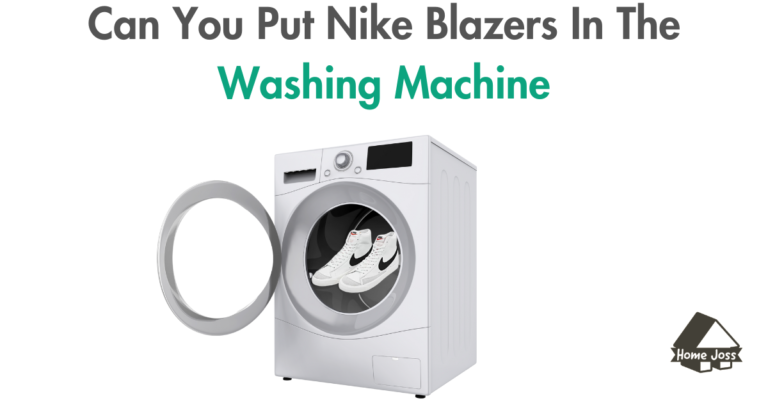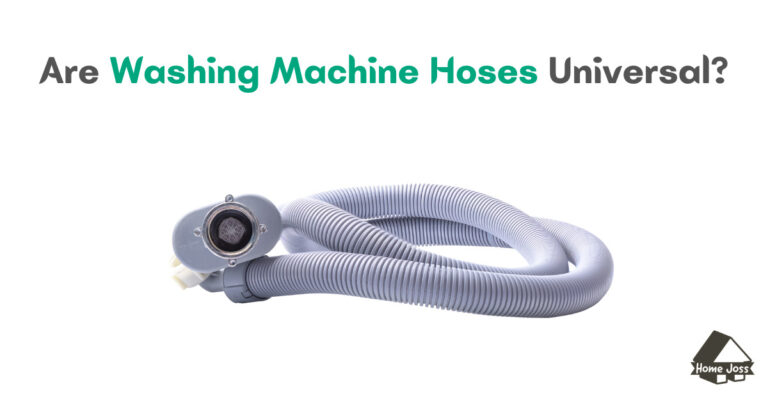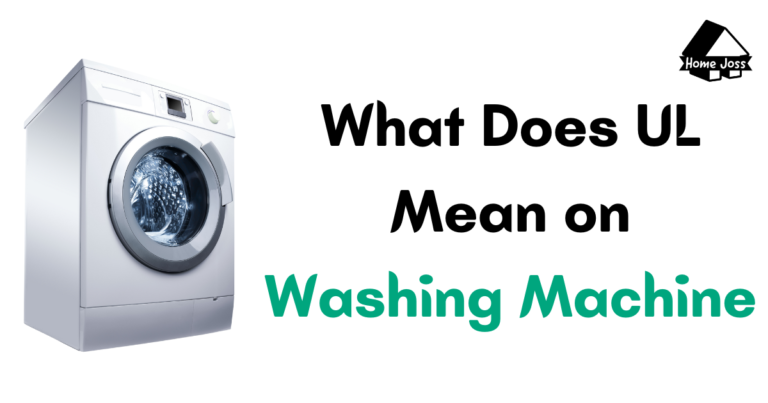Have you ever experienced the frustration of a washing machine that moves and vibrates during the wash cycle? Not only can this be annoying and disruptive, but it can also cause damage to your machine and even your home.
Understanding why your washing machine moves is the first step in finding a solution.
Washing machines move during the wash cycle due to the force of the water and clothing inside the drum. The spinning and agitation of the drum can cause the machine to rock from side to side, resulting in vibrations and noise.
While some movement is normal, excessive movement can be a sign of an underlying issue.

Easy Ways to Stop Your Washing Machine From Moving
Fortunately, there are several simple and effective methods to prevent your washing machine from moving and keep it stable during use. Let’s explore these methods in detail:
1. Remove the Shipping Bolts
When you purchase a new washing machine, it is often held in place during transportation by shipping bolts. These bolts keep the machine stable and prevent it from moving. However, they need to be removed before using the machine.
To remove the shipping bolts, follow these steps:
- Locate the shipping bolts on your machine. They are usually visible once you lift the lid or door of the washing machine.
- Use a screwdriver or wrench to loosen and remove the shipping bolts completely.
- Fit the supplied plastic covers into the holes left by the bolts.
- Place your washing machine in its permanent location.
Removing the shipping bolts ensures that your washing machine is free to move and prevents unnecessary vibrations.
2. Level Your Washing Machine
Uneven floors can cause a washing machine to move and vibrate during use. To prevent this, it is important to ensure that your machine is level. Here’s how:
- Place a bubble level on top of your washing machine lid.
- Adjust the machine’s position until the bubble is centered on the level.
If your machine is not level, you may need to place a piece of wood or adjust the machine’s position to create a level surface. A level machine reduces the likelihood of movement and vibrations.
3. Use Anti-Skid Pads
If your washing machine continues to move after removing the shipping bolts and leveling it, consider using anti-skid pads. These pads help stabilize the machine and reduce movement during use. To use anti-skid pads:
- Peel off the adhesive backing from the anti-skid pads.
- Place the pads underneath each of the machine’s legs.
- Ensure that the pads are securely attached and provide a non-slip surface.
Anti-skid pads can greatly reduce movement and vibrations, keeping your washing machine stable and in place.
4. Adjust the Casters or Wheels
Some washing machines have adjustable casters or wheels on their base, which can contribute to movement if they are uneven or damaged. To adjust the casters:
- Loosen the lock on each caster and turn it clockwise or counterclockwise to make necessary adjustments.
- Once the machine is level, tighten the lock to secure the casters in place.
If your washing machine does not have locking casters or wheels, you can consider purchasing them separately and installing them yourself. This will provide added stability and prevent movement.
5. Balance Your Washer Load
An unbalanced load can cause your washing machine to move and vibrate excessively. To prevent this, it is important to balance the load inside the drum. Here’s how:
- Evenly distribute your clothes and items in the drum as you load the machine.
- Avoid placing all the heavy items on one side of the drum.
- Pay attention to the weight and distribution of the load to ensure balance.
Front-loading washers are more prone to balance issues, so it is especially important to check for an imbalance. Maintaining a balanced load reduces movement and vibrations during the wash cycle.
6. Avoid Overloading Your Machine
Overloading your washing machine can lead to excessive movement and vibrations. It is important to follow the manufacturer’s guidelines regarding load capacity. Here are some tips to avoid overloading:
- Be mindful of the size and weight of your items.
- Use a smaller load setting if necessary.
- Place bulky or heavy clothes toward the edges of the drum.
- Remove any items that are stuck or hanging on the door before starting the wash.
By avoiding overloading, you can prevent unnecessary movement and prolong the lifespan of your washing machine.
7. Check and Replace Shock Absorbers
Shock absorbers play a crucial role in keeping your washing machine stable during use. If your machine continues to move despite the previous steps, it may be time to check and replace the shock absorbers. Here’s how:
- Disconnect the power supply from the washing machine.
- Remove the front panel of the machine to access the shock absorbers.
- Inspect the shock absorbers for any signs of damage or wear.
- If necessary, replace the shock absorbers with new ones compatible with your machine.
- Reattach the front panel and reconnect the power supply.
Proper functioning shock absorbers can significantly reduce movement and vibrations, ensuring a stable washing machine.
8. Inspect and Fix Suspension Rods
Suspension rods connect the washing machine’s drum to its base, providing stability during use. Over time, these rods may become loose or worn out, leading to increased movement. To fix this issue:
- Disconnect the power supply from the washing machine.
- Remove the front panel to access the suspension rods.
- Inspect the suspension rods for any signs of damage, wear, or looseness.
- If necessary, replace the suspension rods with new ones compatible with your machine.
- Reattach the front panel and reconnect the power supply.
Replacing or fixing the suspension rods can significantly reduce movement and ensure a stable washing machine.
9. Replace Tub Dampening Straps
Some washing machines use dampening straps to prevent excessive movement of the tub during spin cycles. Over time, these straps may become worn out or damaged. To replace them:
- Disconnect the power supply from the washing machine.
- Remove the front panel to access the tub-dampening straps.
- Remove the old dampening straps and replace them with new ones.
- Ensure that the new straps are securely attached to their mounting points.
- Reattach the front panel and reconnect the power supply.
Replacing the tub dampening straps can help reduce movement and vibrations, ensuring a stable washing machine.
10. Check and Fix Bearings
Worn-out bearings can contribute to excessive movement and vibrations in a washing machine. To determine if your bearings are causing the issue:
- Put the machine on a spin cycle without any clothes.
- Observe if the machine moves or produces loud noises.
- Check for significant movement between the drum and the outer tube.
If the bearings are worn out, it may be necessary to replace them. This process can be complex and time-consuming, so it is recommended to consult a repair technician or appliance specialist for assistance.
How a Moving Washing Machine Affects You and Your Home
A moving washing machine can have several negative effects on you and your home. These include:
- Increased energy consumption: Excessive vibrations can cause the machine to work harder and consume more energy, leading to higher utility bills.
- Increased wear and tear: Constant movement and vibrations can damage certain parts of the machine, potentially shortening its lifespan.
- Inefficient washing: Excessive movement can prevent the machine from cleaning clothes thoroughly, resulting in poor wash performance.
- Damage to floors and walls: Constant vibrations can cause damage to floors, walls, and surrounding structures, such as cracks and holes.
- Disrupted sleep: If the washing machine is installed near bedrooms or living spaces, the movement and noise can disturb sleep and relaxation.
- Startling pets: Unfamiliar sounds and movements can scare pets that are near the washing machine.
It is important to address the issue of a moving washing machine to avoid these consequences and maintain a peaceful home environment.
FAQs on How to Stop Your Washing Machine
Why does my washing machine shake a lot when it’s washing clothes?
Your washing machine might shake because the clothes inside are not spread out evenly, the floor is not even, or some parts inside the machine are worn out. Make sure to spread out your clothes evenly when loading, and check if the machine is standing flat on the ground.
I forgot to remove some bolts from my new washing machine. Can this make it shake?
Yes, new washing machines have bolts that need to be taken out before you start using them. If you don’t remove them, your machine will shake a lot. Make sure to take them out and cover the holes with the caps that came with your machine.
How do I know if my washing machine is standing straight and not leaning to one side?
You can use a tool called a bubble level, or you can just look to see if it’s leaning. If it’s not straight, you can move it around or put something underneath one side to make it straight.
My washing machine still shakes even though it’s straight and I’ve removed the bolts. What can I do?
You can try putting special pads under the legs of the machine. These pads help to stop it from sliding and shaking. Stick the pads under each leg, and it should help keep the machine still.
How often should I check the parts inside my washing machine to make sure it doesn’t shake?
There’s no set time, but if your machine starts to shake more than usual or make loud noises, it’s time to check the inside parts. Look at the shock absorbers and rods that hold the drum. If they look old or broken, you might need to replace them to stop the shaking.
Dealing with a moving washing machine can be frustrating, but by following the steps outlined in this comprehensive guide, you can prevent it from moving and vibrating excessively.
Remember to remove shipping bolts, level the machine, use anti-skid pads, adjust casters or wheels, balance the load, avoid overloading, check and replace shock absorbers, inspect and fix suspension rods, replace tub dampening straps, and address any bearing issues.
A stable washing machine not only ensures efficient and effective cleaning but also prolongs the lifespan of the appliance. By taking the necessary steps, you can enjoy hassle-free laundry days and maintain a peaceful home environment.






